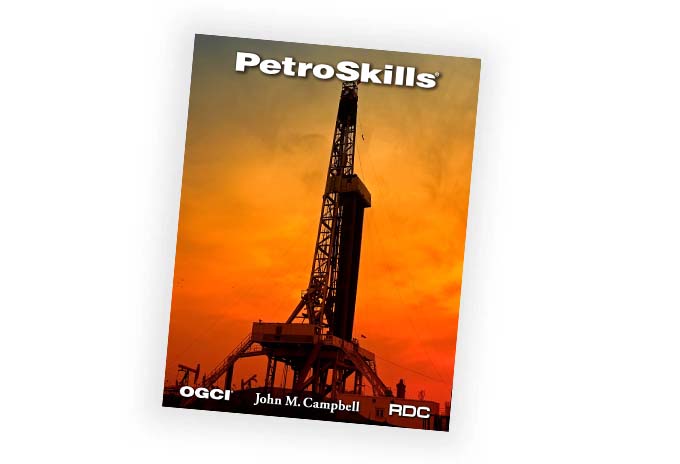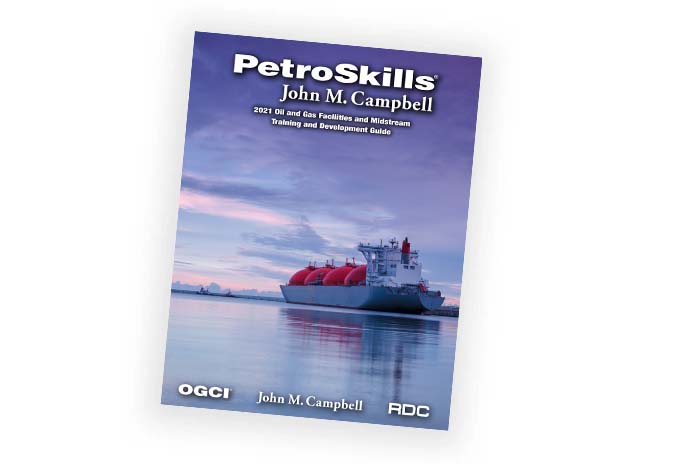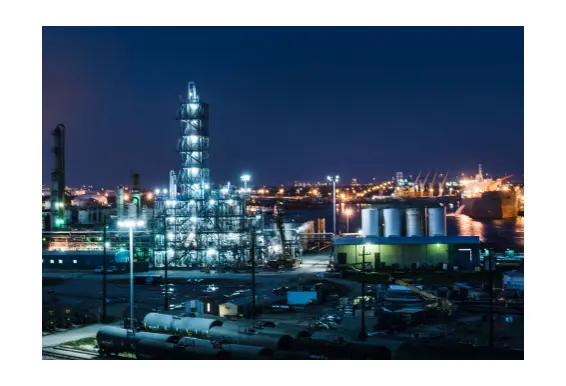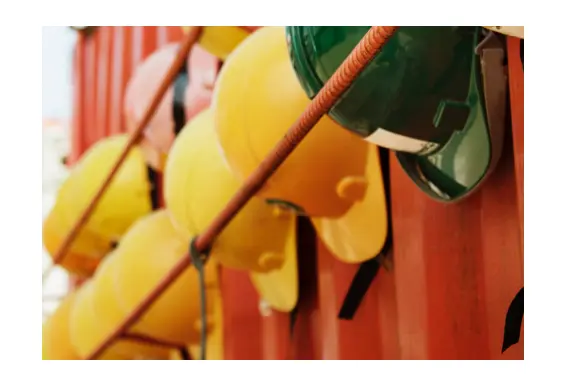Completions and Workovers - CAW - eLearning series
About the Course
This workshop will be delivered virtually through PetroAcademy. Each PetroAcademy offering integrates multiple learning activities, such as reading assignments, self-paced e-Learning, virtual instructor-led sessions, discussion forums, group exercises, case studies, quizzes, virtual field trips, and experiential activities.
Activities include 9 hours of instructor-led, virtual training sessions, plus approximately 50 hours of self-paced work. See detailed schedule
In addition to the scheduled sessions, this course is available on-demand, wherein the course work is self-paced and instructor-led sessions are available any time as videos.
The Completions and Workovers Blended Program represents one of the most popular foundation series courses within PetroSkills' production engineering curriculum. Participants will become familiar with many aspects of modern completion design as well as a variety of workover technologies. This course is intended to be broad based, and includes both conventional and unconventional wells. The focus of this program is on design and selection.
Target Audience
Graduates or engineers with experience, engaged in drilling operations, production operations, workover, and completions; petroleum engineers in both the service and operating sectorsYou Will Learn
-
The purpose and basic operational aspects of wellhead, flow control equipment., and the major components used in a basic well completion in conventional plays
-
The impact that drilling practices may have on reservoir productivity
-
Describe the function and limitations of each surface and subsurface component of a basic onshore completions
-
Specify the production target of a well, and describe the type of completion or workover design components required to achieve the target
-
Describe the basic properties of completion components materials and their limitations in conventional resources plays. Describe which fluid systems are the most important for implementing successful completions and workovers in wells in conventional resources plays
-
Describe the most common subsurface equipment components used in conventional resources plays wells, and what they are used for
-
Describe the most relevant steps for implementing completion procedures in wells in conventional resources plays, and the proper interaction with all parties involved required
-
Describe the most relevant aspects of HSE in completion operations
-
Describe how a well flows, the impact of well control on fluid flow, and the most common control and monitoring devices
-
Describe the basic requirements and local regulations to abandon conventional wells
-
Specify the production target of a horizontal well, and describe the type of completion or workover design components required to achieve the target in conventional and unconventional resources plays
DESIGN PROCESS FOR COMPLETIONS AND WORKOVERS
-
Recognize the differences between a procedure, and a basis of design
-
Read and interpret a simple well sketch
-
Read and interpret a simple procedure
-
Read and interpret a simple basis of design
-
Explain the typical engineering criteria that underlies a completion or workover plan - economics over the life of the well, safety over the life of the well
-
Participants will learn how their technical specialty may help contribute to a basis of design, including reservoir, geology, petrophysics, procurement, logistics
ONSHORE UNCONVENTIONAL WELL COMPLETION
-
Describe the purpose and basic operational aspects of wellhead and flow control equipment in wells in unconventional plays
-
Describe the purpose of each of the major components used in a basic well completion in unconventional resources plays, and the impact that drilling practices have on reservoir productivity
-
Describe the function and limitations of each surface and subsurface component of a basic onshore completion in unconventional resources plays
-
Describe the basic properties of completion components materials and their limitations in unconventional resources plays
-
Describe which fluid systems are the most important for implementing successful completions and workovers in wells in unconventional resources plays
-
Describe the most relevant steps for implementing completion procedures in wells in unconventional resources plays, and the proper interaction with all parties involved required
-
Describe the most common techniques used to drill, complete, stimulate, and produce typical wells in coalbed methane reservoirs
PERFORATING
-
Discuss various shaped charges, their design, performance, shot phasing and shot density options, and their advantages and limitations
-
Illustrate the three primary perforating gun conveyance systems and the various gun types available and their individual features
-
Understand concepts like perf tunnel damage, gun standoff, underbalance, gun correlation on depth, and other engineering input requirements for each perforating job design
DESIGN FUNDAMENTALS
-
Select an appropriate well/ reservoir interface
-
Select an appropriate conduit up the well, and identify the barriers in place to contain that flow
-
Describe the most common sand face completion methods, and when to select each one
-
Determine the range of tubing sizes appropriate for a given well, and what factors to consider in the final selection
-
Assess the type of metal required for a given environment
-
Assess the type of elastomer required for a given environment
-
Position equipment in several common types of upper completions
WELL COMPLETION FUNDAMENTALS
-
The various types of packers available in the oilfield, production vs. service, perm, anent vs retrievable, mechanical set, electric line set, hydraulic set, hydrostatic set, swellable, and inflatable
-
Frac plugs and frac sleeves and toe sleeves and how these are used in the two most common types of unconventional completions
-
Circulating devices, including sliding side doors and circulating mandrels
-
Landing nipple profiles and associated lock mandrels
-
Additional tubing accessories such as wireline reentry guides, flow couplings, blast joints
-
How this equipment may be arranged in several different well types
FORMATION DAMAGE AND MATRIX STIMULATION
-
The basic causes of oilfield formation damage and how they are recognized
-
The concept of “True Formation Damage” and the principles of formation remediation once it has been correctly identified as being the cause of lost production
-
How “pseudo” damage and differs from True Formation Damage
-
The principles of limestone matrix acidizing and the chemistry and reactions involved
-
The principles of sandstone matrix acidizing and the chemistry and reactions involved
-
Formation damage identification and the positive results achieved by successfully conducting matrix acidizing jobs
SAND CONTROL
-
Identify the need for sand control
-
Recognize the causes of sand movement
-
Define what consolidated sand is, and what it is not
-
Identify both non-mechanical and mechanical methods of sand control
-
Recognize that rate restriction is a valid practice to manage sand production
-
Recognize that minor sand volume produced may be tolerated
-
Identify various screen types for sand control
-
Outline aspects of pre-packed screens for sand control
-
Describe the principles of sand control screen and gravel completions
-
Identify the three steps comprising a gravel pack completion design
-
Describe various fluid options for pumping gravel slurry into a gravel pack completion
-
Outline the function of a gravel pack “crossover tool”
-
Outline the function of a gravel pack “shunt tube”
-
Describe the function of a frac pack completion
-
Outline the frac pack completion well performance results
-
Outline the function of an expandable sand screen completion
-
Identify the components of an expandable screen and possible benefits resulting from the use of expandables
FLOW ASSURANCE AND PRODUCTION CHEMISTRY
-
Typical oilfield “flow assurance” issues and problems due to: waxes, asphaltenes, inorganic scales, and corrosion
-
How to interpret revealing signs of corrosion and erosion failure, scale formation, and related downhole deposits and how to prevent or minimize their production loss effects
-
How formations become damaged due to related flow assurance and production chemistry issues
-
The importance of collecting data to categorize options to choose an optimum well prevention and treatment plans
-
How to recognize, prevent, remove, and manage organic paraffin and asphaltene field deposits
-
How to recognize, prevent, remove and manage typical common soluble and insoluble scales in oil and gas operations
-
The importance of using oilfield production chemistry to resolve production problems
-
The conditions required for the formation of gas hydrates
-
How ice crystals and methane in pipelines can lead to severe plugging of lines if not prevented from occurring or regularly removed by pigging operations
-
The methods employed to treat gas hydrates in pipelines
PRODUCTION PROBLEM DIAGNOSIS
-
Describe the different types of field collected data, and the most relevant factors that affect well performance in conventional and unconventional resources plays
-
Describe the difference between drill stem and production tests, when to select and apply each test, how to validate collected data, and the purpose of pressure buildup analysis in conventional and unconventional resources plays
-
Describe the effect of pressure on fluid flow, Inflow Performance Relationship analysis principles, and the best tubing correlations to use when modeling vertical and horizontal wells
-
Describe the importance of applying and complying with all requirements to ensure integrity throughout the life cycle of a well including potential well problems from thermal fluids
WELL INTERVENTION
-
Describe the main components of a slickline unit
-
Describe the main components of an electric line unit
-
Describe the main components of a coiled tubing unit
-
Describe the main components of a snubbing (hydraulic workover) unit
-
Describe the main components of a conventional workover rig
-
Compare and contrast the critical operational benefit and/or constraints of each of the above methods: ability to circulate, ability to rotate, ability to push, ability to enter a live well
WORKOVER FUNDAMENTALS
-
Categorize well problems
-
Select possible remediation and techniques for a variety of well problems
-
Recognize barrier changes throughout a workover operation
-
Explain the need for contingency planning in workover operations
-
Prepare several common workovers
Course Content
BLENDED LEARNING WORKSHOP STRUCTURE
This program is comprised of the following activities:
ILT = Virtual Instructor-led Training
OL = Online Learning Activity/Reading
| Unit | Activity | Hours (Approx) | Subject |
| Unit 1 |
ILT |
1.0 | Orientation Webcast (pre-recorded) |
| OL | 4.0 | Onshore Conventional Well Completion | |
| Unit 2 | OL | 4.0 | Design Process for Completion and Workovers |
| OL | 3.0 | Perforating | |
| Unit 3 | OL | 4.0 | Onshore Unconventional Well Completion |
| OL | 3.0 | Sand Control | |
| Unit 4 | OL | 4.0 | Hydraulic Fracturing |
| Unit 5 | OL | 5.0 | Completion Design Fundamentals |
| ILT | 3.0 | Completion Design Fundamentals | |
| OL | 4.0 | Well Completions | |
| ILT | 3.0 | Well Completions | |
| Unit 6 | OL | 3.0 | Formation Damage and Matrix Stimulation |
| OL | 5.0 | Flow Assurance and Production Chemistry | |
| Unit 7 | OL | 3.0 | Production Problem Diagnosis |
| Unit 8 | OL | 4.0 | Well Intervention |
| Unit 9 | OL | 5.0 | Workover Fundamentals |
| ILT | 2.0 | Workover Fundamentals - Session 1 | |
| ILT | 2.0 | Workover Fundamentals - Session 2 |
Product Details
Categories:
UpstreamLevels:
FoundationProduct Type:
CourseInstructors:
Mason GomezAdditional
Request a Public Session
If you are interested in a public session of this course, please click the button below to request it.
Request Public SessionIn-House Training
This course is also available upon request as a private, on-site seminar. Contact us for details and pricing.
Request In-House TrainingNeed Help
Contact us if you have additional questions about how to register for or attend this course.
Contact Us



